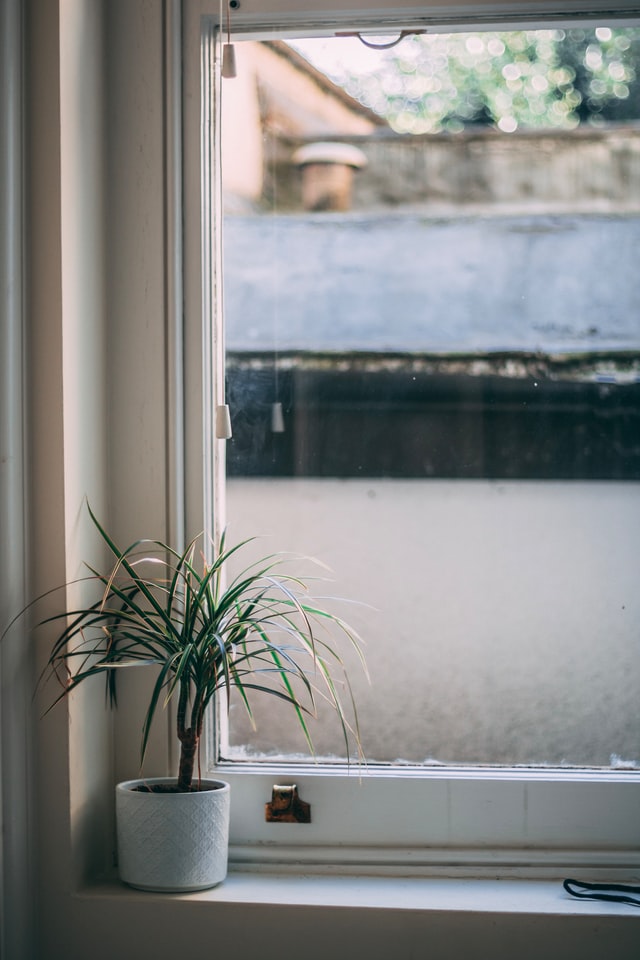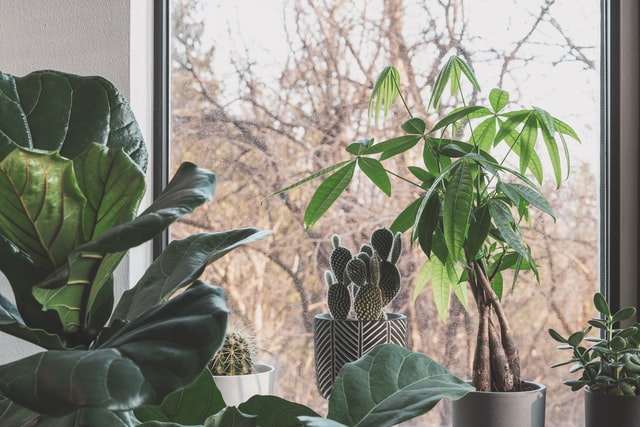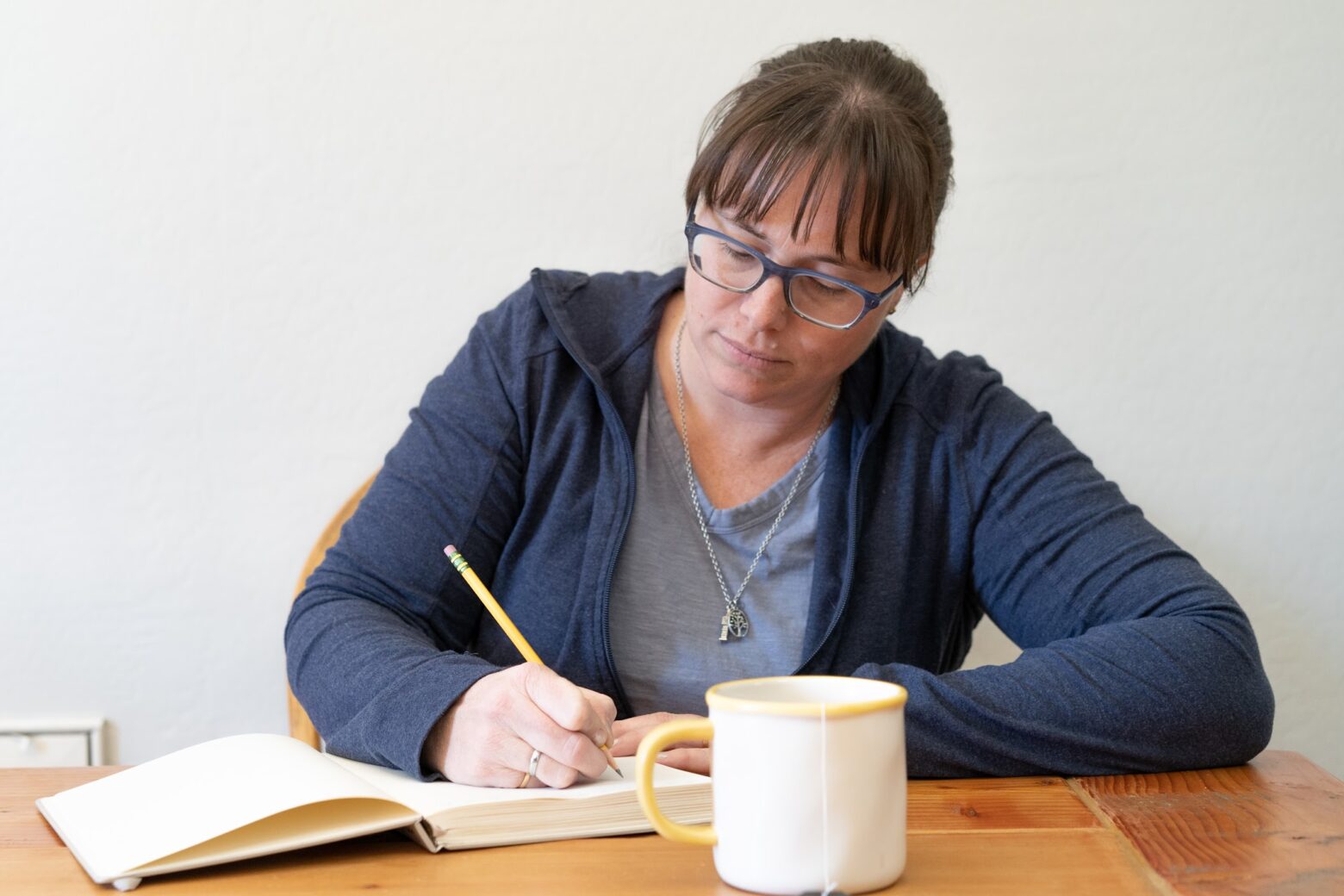When a house plant is dying it often needs a new location and a different watering schedule. Our Rituals, Routines, and Rhythms in our homes are the same way.
Sometimes we just need a change to spark new growth.
We get stuck in what used to work and we forget that we need to make adjustments. I love creating systems and plans. I am usually surprised when something stops working. A routine that has worked for the summer no longer works for the school year. Rituals that used to bring me peace and helped me feel grounded now feel like too much work and a waste of time.
Allowing change is necessary. Each of these areas of habit formation will work until suddenly one day they don’t. And that’s okay. It just means that you have to adapt and change to fit where you are right now.
In my life, I often do this with playlists and parts of my morning routine. Something will work for weeks. It will be the reason that I get out of bed in the morning. And then one day I decide I just cannot listen to that same playlist anymore, or this book is not working for me, or I need to take a break from this podcast, and I need to change what I’m eating for breakfast.
Change can be a beautiful thing that revives something that felt like it was dying.

Photo by Tomi Vadász on Unsplash
The way we structure the small things in our lives adds up over time.
So, why are these important?
These daily decisions are actually how we build our lives. These small pieces decide how we do things in our homes. No matter if we are intentional or if we mindlessly participate.
Our Rituals, Routines, and Rhythms can be life-giving or harmful for our long-term goals. The way we structure the small things in our lives adds up over time.
- Choosing to add a one mile walk in the neighborhood 3 times a week = 3 miles a week, 12 miles per month, and 156 miles in a year.
- Spending time reading on the couch every night adds up too. Even just 5 pages a day = 35 pages a week, 140 pages per month, almost 2,000 pages a year. (that’s about 6 books)
- If I have the routine of walking in the door and turning on the TV my habits and activity level will be very different from someone who puts the TV in a separate place gets turned on when they intentionally watch it.
“Designing a rhythm of life is something anyone in any season of life can do.
It’s simple and lifegiving and creates a beautiful and flexible framework for decision making.”
– From Emily P. Freeman in this article and podcast.
Rituals
Rituals have a methodical nature to them. They’re very specific to location, smells, sounds, and activity.
Often rituals become part of our lives without much thought. We drive the same route, we walk the same path in the neighborhood, we sit in the same place in the church, and we do the same things when we get the mail from the mailbox.
- What if we looked at our lives at all the places we turn on autopilot?
- Where do you have rituals that are life-giving and fill you up for the next activity?
- When do you just go through the motions? What can you add or change in those areas that would help your daily life?
- Do you walk in with the pile of mail and dump it on the kitchen counter? What if you stood at the trash can and processed it immediately?
- Can you change the route you take inside the grocery store so that you are buying more fresh food and spending less money on processed overpriced items?
- Church services and traditions are a beautiful example of rituals. How do you start your week with what matters to you? How do you center yourself in God’s Truth and His Word?
- I learned that I can change the atmosphere in my morning and my home with a simple Morning Greeting ritual. Sometimes the small simple things are what is most powerful.
- Where can we choose to be intentional about what we do and the order that we do things?
This concept can also unlock our creativity and help us make the mental shift to the task we want to dive into.
“Be repetitive. Choose the same place to [make a creative] leap, the same food, the same music, the same route, the same timeframe. By creating a structure you can repeat, you can dive into your creative project more quickly.”
– from Kendra Adachi‘s writing ritual from her podcast – #74 THE LAZY GENIUS TAKES A CREATIVE LEAP
Routines
Routines are steps that usually happen in a specific way. They are tasks that need to be done. So you can use things like habit stacking, lists and charts, phone reminders, and bullet journal pages with checkmarks.
When we harness the power of routines we can get more done in shorter amounts of time. We are able to put things together that logically stack onto one another.
Let’s go back to that practical list. How can you use these in your routines to bring joy and life into your home?
- habit stacking – What can you put together to form new habits and keep up with old ones?
- I used to have 5 separate tasks to do each morning fitting it between what the kids needed. But now, I get it all done at once in 15 minutes and then have space to do other things or just be fully present with my kids. No more multitasking! (see this article for more info)
- lists – I have found freedom in list-making.
- When I know what I need to get done then I can choose what to do. I can make a conscious decision to spend my time on something or ignore it. I feel calm. I feel frantic when I listen to “the squeakiest wheel”, the loud, and the urgent. I end up wasting time on what does not matter to me. (see this article for more info)
- charts – In our house chore charts means that each person has a list of what they are in charge of.
- These are typically household tasks that could be done at any time of day but I choose to get them done in the morning. By the time we eat breakfast, the house looks cleaner and the animals are fed. These simple routines have made things around our house more manageable and peaceful. No matter what the rest of the day holds, we have started on the right foot. (see this article for more info)
- phone reminders – I often use my phone reminders to help me remember what I need to get done and when.
- By the end of the day I feel like my head is buzzing with information and noise. My self-control has been used up. I am loosing a very real battle with decision fatigue. My patience and kindness have frayed. I am worn out. Most of it has been good. Most days are full of good and beautiful things. But they are full. (more about how I manage my phone here)
- bullet journal pages with check marks – There is something so very satisfying about checking off boxes. If you are a planner/goal driven person like me you get it.
- This will help – (Productivity for Moms Series)
- And this will be something you will like – (Areas that get in the way of productivity.)
“Routine is repetition tied to a certain task or time of day, and we all do the same stuff under the same sun.
Your routine looks different from mine based on all the regular variables – personality, life stage, vocation, goals – but we all need the grounding power of routine for more reasons than you might think.”
Rhythms
Rhythms are patterns we follow as a way of doing something. The part of my morning routine after I get into my office is a good example of this. I have a list of things that I like to do. However, I allow each day to be different. I embrace my mood, how much time I have, what needs to be done, and what I want to work on.
Rhythms can be helpful with small children as you move about your day. One of the big takeaways that shaped my early parenting years was the concept of a rhythm. From the book Secrets of a Baby Whisperer for Toddlers by Tracy Hogg – The day should consist of this rhythm: sleep, eat, activity, diaper, sleep (and repeat). I found this essential in giving me guidance on what do to next. (Not time frames or a schedule but a way to move forward into the next thing.)
Rhythms are also helpful within a week. Dealing with the variety of tasks and things to be done can be daunting. If every single day is slow and quiet life would get rather dull. But if every day was fast and intense your body and your mind would not be able to keep up. I often look at the week overall and assess what types of events we should do or have done.
- Where is a place that you need to add a healthy rhythm into your day or week?
- Rhythms can be harder to track because “its just the way we do things”. So, ask yourself some questions and pause for reflection. What types of events have we done this week? What should we do next?
- Where can you slow down and add some rest? (read about that here)
- Work, homeschooling, and housework can often follow rhythms. How can you adjust your rhythms for your cleaning schedule? (this will help)
- What do you naturally do when you get home from an activity?
- What do your weekends typically look like? Do you enjoy this rhythm or does it need just a bit of change?
“How we spend our days is, of course, how we spend our lives. What we do with this hour, and that one, is what we are doing.”
– From writer Annie Dillard in her book, The Writing Life

Photo by Scott Webb on Unsplash
I hope that one of these questions sparked something inside you. That you see a place where you need to make a change or move forward into growth.
Don’t be the houseplant in the dark corner with withered leaves.
Take care of yourself in how you go about your day. Spend time on the Rituals, Routines, and Rhythms that are life-giving to you.

A Prayer and Encouragement:
Trust yourself to choose well, then give it time to work.
Change your mind if you need to. There’s no wrong here.
Trust God to give you what you need when you need it.
Believe He’s truly on your side.
Let the morning bring you Word of His unfailing love.
Put yourself in a position to receive it.
No matter what transition you may be in the middle of, know this one thing for sure:
God will not let you miss your own future.
He’s with you each step as you simply do your next right thing in love.
– from: HOW TO CREATE A SIMPLE MORNING ROUTINE – by Emily P. Freeman
I am cheering for you in whatever Rituals, Routines, and Rhythms you create or decide to try out. Experiment with what works for you, in this season, within your home, and with your people.
Be brave and make space for what matters to you. Be kind to yourself if it takes some trial and error.
You can do this!
Hugs! – April

Photo by Kyle Glenn on Unsplash
-
Join me on Substack!
Hey! Hello! 😁 I am so glad you have found my blog! This is my home place where I test out writing work, post weekly articles, and share updates on my books. I love having my own corner of the internet that I can call my own. Unfortunately, because of bots and ugly internet trolls,……
-
My January Personal Curriculum Plans
In past Januarys, I have felt all the feels. This month is so full of potential (and sometimes disappointment). There have been years in the past when I been in the different January extremes. I have felt overwhelmed by grief, or plowed over by the insanity of the overly full Christmas season, or hopeful and……

